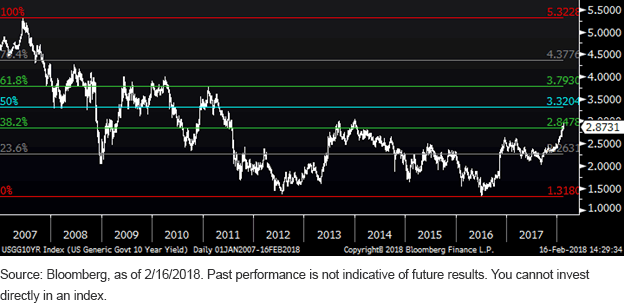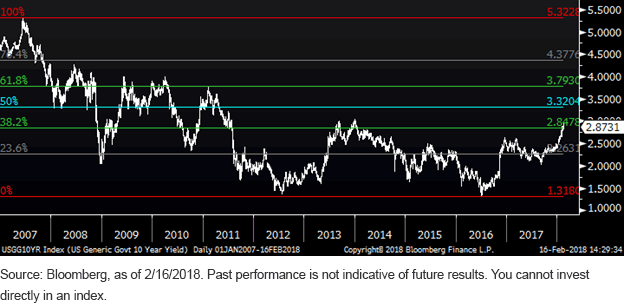For a bond market participant, the title of this blog post highlights the lion’s share of questions I’ve been receiving over the last few weeks with respect the U.S. Treasury (UST) 10-Year yield. Consensus estimates did, once again, look for the UST 10-Year yield to rise this year, but the timing and magnitude of the early 2018 move to higher levels have certainly caught most everyone by surprise. In my opinion, the increase was essentially pushed up by at least six months, as we viewed an elevated trading range becoming more acute during the middle to latter part of this year. So then, how did we get here?
Cause and Effect
Without a doubt, the UST market is operating in a different landscape to begin 2018 than it had in the last few years. When searching for reasons behind this increase in the UST 10-Year yield, I like to look at it as being three legs of a stool.
U.S. Generic Government 10-Year Yield

That leads us to the bond market’s perception of potential Fed policy action this year, perhaps the most important “effect” going forward. In the last few years, the fixed income arena has thought the Fed would raise rates fewer times than what the Fed projected in their blue dots report. In contrast, early this year, the bond market has begun to think the Fed may raise rates more than the Fed projected. Three moves have been fully priced in the Fed Funds Futures market, and the conversation has turned to the possibility of a fourth tightening move in 2018 (one rate hike each quarter).











Leave A Comment